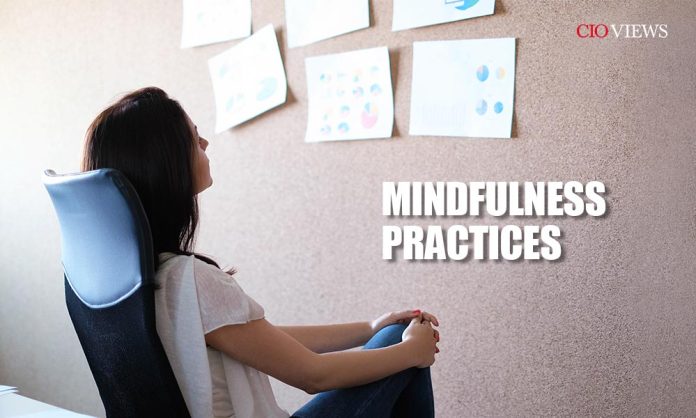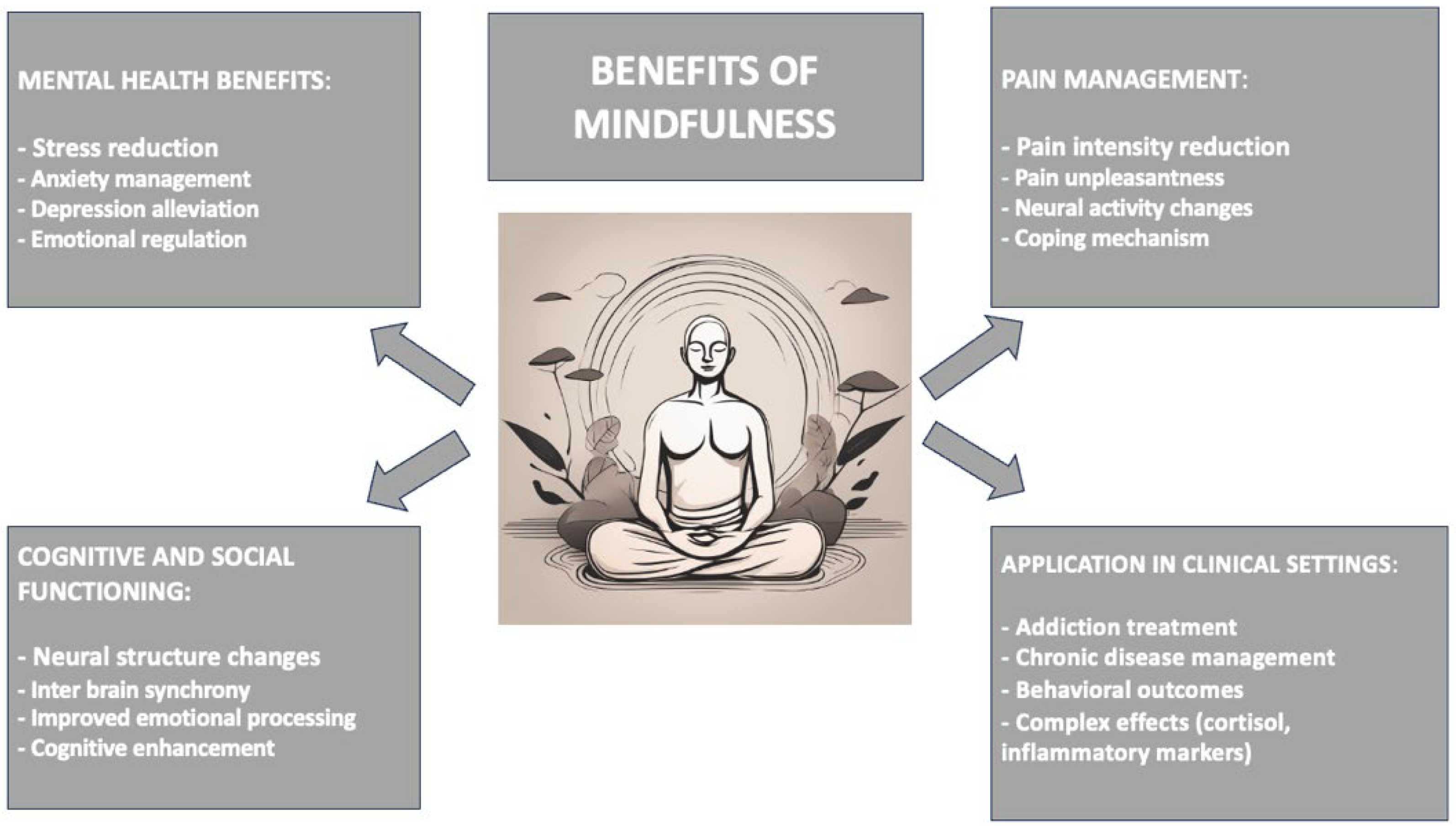Unveiling Mindfulness: Your Gateway to Inner Peace and Wellness
Have you ever felt overwhelmed by life’s relentless demands? I certainly have. In our fast paced world, finding moments of tranquility seems nearly impossible. Yet, I discovered a life changing practice that transformed my chaotic days into balanced, purposeful experiences. Mindfulness isn’t just another wellness trend it’s an ancient practice with profound benefits for modern living.
When I first embraced mindfulness, I was skeptical. How could simply paying attention to the present moment make such a difference? But the astonishing results speak for themselves. Research from Harvard Medical School reveals that mindfulness meditation can actually rewire our brains, enhancing focus, reducing stress, and boosting emotional regulation. These aren’t just feel-good claims they’re scientifically validated outcomes.
Understanding Mindfulness: Beyond the Buzzword

Mindfulness is essentially the practice of being fully present and engaged in the current moment, aware of your thoughts and feelings without judgment. It sounds deceptively simple, yet this fundamental shift in awareness can dramatically transform your relationship with yourself and the world around you.
Many people mistakenly believe mindfulness requires hours of meditation or spiritual awakening. In reality, it’s about cultivating conscious awareness throughout your everyday activities. From savoring your morning coffee to truly listening during conversations, mindfulness weaves seamlessly into daily life.
Through my personal journey, I’ve discovered that mindfulness creates a powerful buffer against anxiety and stress. Instead of dwelling on past regrets or worrying about future uncertainties, mindfulness anchors us firmly in the now—the only moment we can actually influence.
The Science Behind Mindfulness: Why It Actually Works

The skeptic in me needed evidence, and the research didn’t disappoint. Neuroscience has revealed fascinating insights into how mindfulness physically changes our brains. Regular practice increases gray matter density in regions associated with learning, memory, emotion regulation, and empathy.
Perhaps most impressive is mindfulness’s impact on the amygdala our brain’s alarm system. Studies show that consistent mindfulness practice actually shrinks the amygdala, reducing its reactivity to stress triggers. Meanwhile, it strengthens connections to the prefrontal cortex, enhancing our capacity for rational decision-making even during challenging moments.
The benefits extend beyond mental health. Research has documented mindfulness’s positive effects on everything from immune function to cardiovascular health. One remarkable study found that mindfulness practitioners showed increased telomerase activity an enzyme that helps maintain cellular health and is associated with longevity.
| Area of Impact | Benefits of Regular Mindfulness Practice | Supporting Research |
|---|---|---|
| Mental Health | Reduced anxiety, depression, and stress; improved mood regulation | JAMA Internal Medicine meta-analysis of 47 trials |
| Cognitive Function | Enhanced attention, memory, and decision-making | Harvard review of neuroimaging studies |
| Physical Health | Improved immune function, reduced inflammation, better sleep | University of Wisconsin longitudinal study |
| Relationships | Increased empathy, improved communication, greater satisfaction | Journal of Marital and Family Therapy clinical trials |
Starting Your Mindfulness Journey: Simple Daily Practices
The beauty of mindfulness lies in its accessibility. You don’t need special equipment, expensive retreats, or hours of free time. These straightforward practices can integrate into even the busiest schedule:
- Mindful Breathing: Take three deep, conscious breaths whenever you feel stressed. Simply focus completely on the sensation of air entering and leaving your body. This instantly activates your parasympathetic nervous system, triggering relaxation.
- Body Scan: Spend five minutes noticing sensations throughout your body, from your toes to the crown of your head. This practice grounds you in physical reality rather than anxious thoughts.
- Mindful Listening: During your next conversation, challenge yourself to listen completely without planning your response. Notice how this transforms your connections.
- Sensory Awareness: While eating or drinking, engage all five senses. Notice flavors, textures, aromas, colors, and even sounds. This simple practice transforms ordinary moments into extraordinary experiences.
When I first incorporated these practices, I noticed subtle yet profound shifts within days. My sleep improved, relationships deepened, and I gained valuable perspective during challenging situations. The cumulative effect over months and years has been nothing short of transformative.
Mindfulness at Work: Boosting Productivity and Satisfaction
The workplace often seems antithetical to mindfulness constant demands, digital distractions, and performance pressure create the perfect mindlessness storm. Yet, paradoxically, this makes work an ideal environment to practice and benefit from mindfulness.
Major corporations like Google, Apple, and General Mills have implemented mindfulness programs after seeing stunning results. Employees report sharper focus, enhanced creativity, better collaboration, and significantly reduced burnout. The economic implications are substantial mindful employees take fewer sick days, make better decisions, and remain more engaged.
I’ve found these workplace practices especially effective:
Single-tasking: Despite the glorification of multitasking, cognitive science proves it’s inefficient and draining. Instead, try giving complete attention to one task for 25-minute intervals, followed by brief breaks. The improvement in quality and efficiency is remarkable.
Mindful transitions: Between meetings or tasks, take 30 seconds to reset with conscious breathing. This creates clear boundaries between activities and prevents mental residue from carrying forward.
Tech boundaries: Designate specific times to check emails and messages rather than responding to every notification. This simple habit dramatically reduces stress and distraction while improving productivity.
“Mindfulness isn’t about escaping workplace challenges it’s about developing the clarity and resilience to navigate them skillfully. When we bring conscious awareness to our work, we transform not just our experience but also our results.”
Mindfulness for Emotional Wellbeing: Navigating Life’s Storms

Perhaps mindfulness’s most valuable gift is emotional regulation the ability to experience difficult feelings without being overwhelmed by them. Through mindfulness, I’ve discovered that emotions are much like weather patterns—they arise, intensify, and eventually pass if we don’t resist them.
When challenging emotions surface, try the RAIN technique developed by meditation teacher Tara Brach:
- Recognize what’s happening. Name the emotion specifically.
- Allow the experience to be there without trying to change it.
- Investigate with kindness, noticing body sensations, thoughts, and beliefs associated with the emotion.
- Nurture yourself with compassion, recognizing this is a difficult human moment.
This approach creates breathing room between stimulus and response. Instead of automatically reacting to triggers, we develop the capacity to respond thoughtfully. Over time, this dramatically transforms our emotional landscape, building resilience against anxiety, anger, and other difficult states.
I’ve found mindfulness particularly powerful during life transitions and challenges. Whether facing health concerns, relationship difficulties, or professional setbacks, mindfulness provides an anchor amid uncertainty. It doesn’t eliminate problems, but it fundamentally changes our relationship to them.
Mindfulness for Physical Health: The Mind-Body Connection

The mind-body connection isn’t just philosophical it’s physiological. Chronic stress triggers inflammatory responses linked to numerous health conditions, from cardiovascular disease to autoimmune disorders. Mindfulness directly counteracts these harmful mechanisms.
When practicing mindfulness regularly, I’ve noticed tangible physical benefits: better sleep quality, reduced tension headaches, improved digestion, and greater energy. Research supports these observations, documenting mindfulness’s positive impact on everything from chronic pain to immune function.
Here’s how mindfulness influences physical health:
Stress reduction: By activating the parasympathetic nervous system, mindfulness lowers cortisol levels and reduces inflammation throughout the body.
Pain management: Mindfulness changes our relationship to physical discomfort by separating the sensation from our emotional response to it. This can reduce perceived pain intensity by up to 40% in clinical studies.
Enhanced body awareness: Regular practice increases interoception our ability to notice subtle body signals—helping us recognize early warning signs of illness or imbalance.
Healthier habits: Mindfulness breaks automatic patterns, making it easier to recognize and change unhealthy behaviors around eating, exercise, and substance use.
Creating Your Sustainable Mindfulness Practice
Consistency matters more than duration when establishing mindfulness habits. Five minutes daily yields greater benefits than an hour once weekly. Here’s how to build a practice that sticks:
Start small: Begin with just two minutes of mindful breathing each morning. This modest commitment eliminates resistance while establishing the neural pathways for longer practice.
Link to existing habits: Attach mindfulness to something you already do daily brushing teeth, drinking coffee, or commuting. This “habit stacking” dramatically increases consistency.
Use technology wisely: While digital distraction often undermines mindfulness, certain apps can support your practice through guided meditations, interval bells, or progress tracking.
Find community: Whether through local groups, online forums, or meditation apps with community features, connecting with fellow practitioners provides motivation and shared wisdom.
Remember that mindfulness isn’t about achieving some perfect mental state it’s about continuously returning to present-moment awareness with kindness. Every time your mind wanders and you gently bring it back, you’re strengthening your mindfulness “muscles.”
Moving Forward: Mindfulness as a Lifelong Journey
As my practice deepens, I’ve discovered that mindfulness isn’t a destination but an unfolding journey. The benefits compound over time, creating profound shifts in how we experience ourselves and our world. Even during periods when formal practice feels challenging, the awareness we’ve cultivated continues working subtly beneath the surface.
The most transformative aspect of mindfulness may be how it reveals our fundamental interconnectedness. As we become more present with ourselves, we naturally extend that presence to others, fostering deeper relationships and genuine empathy.
If you’re feeling overwhelmed by life’s complexity or simply seeking greater well-being, I invite you to explore mindfulness with an open mind. Start with just a few conscious breaths or moments of sensory awareness throughout your day. These small seeds of attention, planted consistently, grow into profound inner resources that support you through life’s inevitable challenges and joys.
Remember, mindfulness isn’t about adding another task to your to-do list it’s about bringing a different quality of attention to everything already on that list. The present moment is always available, offering its gifts of clarity, peace, and connection. All we need to do is show up for it.








